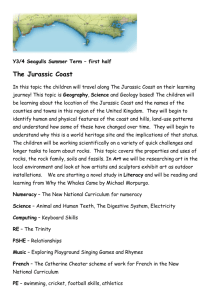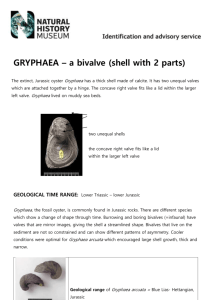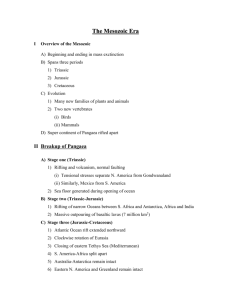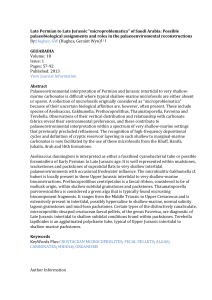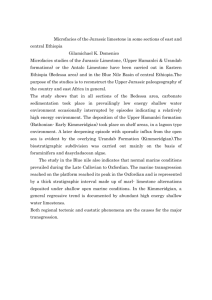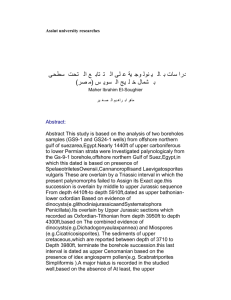Assessment Exercises All students are expected to engage with
advertisement
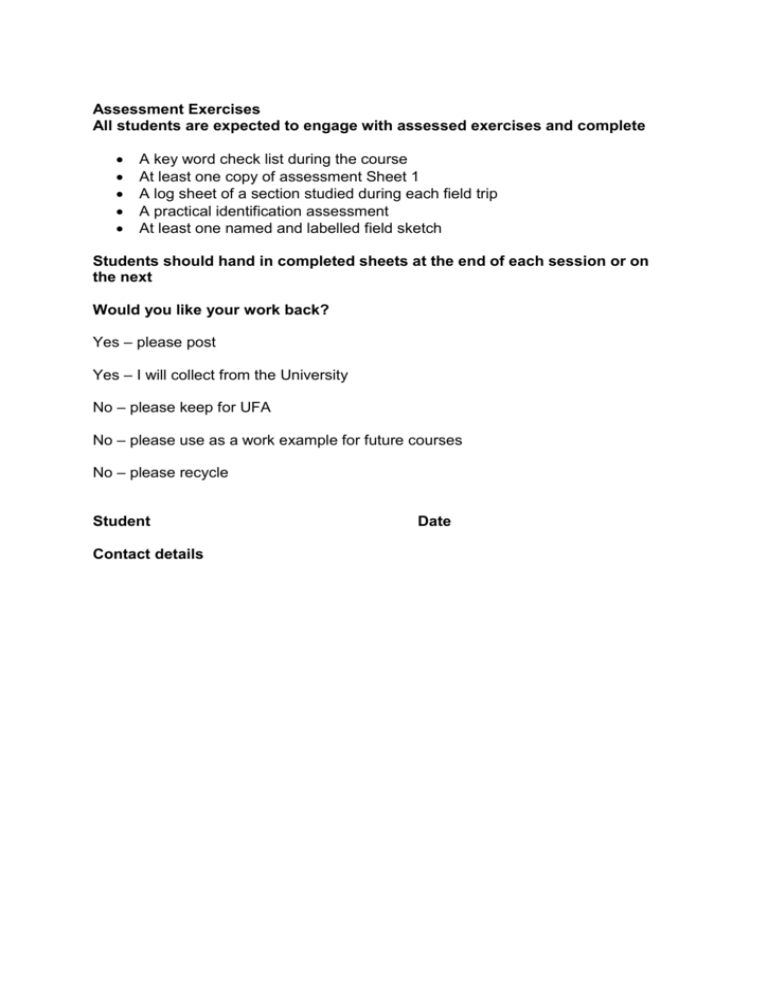
Assessment Exercises All students are expected to engage with assessed exercises and complete A key word check list during the course At least one copy of assessment Sheet 1 A log sheet of a section studied during each field trip A practical identification assessment At least one named and labelled field sketch Students should hand in completed sheets at the end of each session or on the next Would you like your work back? Yes – please post Yes – I will collect from the University No – please keep for UFA No – please use as a work example for future courses No – please recycle Student Contact details Date Key Words Assessment Stratigraphy Mudrocks Doggers Echinoids Bivalves Crocodiles Sandstones Limestones Corals Deltaic Oxford Clay Oysters Kellaways Malton Oolite Bioturbidation Dinoturbidation Ravenscar Lias Corallian Storm Surges Coral Rag Gastropods Urchin Marls Lower Calcareous Grit Fault Joint Bedding Drifted Plants Belemnite Tracks and Trails Scarborough Member Formation Hildenley Group Jet Rock Ammonites Pyrite Alum Gypsum Sparite Micrite Whitby Dinoprints Redcar Cross Bedding Slumping Channels Cement stone Doggers Cornbrash Coral rag Cornbrash Anaerobic Coal Rootlets Calcite Passage Beds Coral Reefs Ooids Assessment Sheet No.1. Complete one sheet for every visit Name …………………………………………………… Date …………………….. Locality ……………………………………………… GR ……………………………. Stratigraphy Rock Types Group Limestone Formation Clay Member Sandstone Unit Shale Sedimentary Structures Fossils Cross bedding Ammonite Storm Surge Beds Bivalve Bioturbidation Brachiopod Dinoturbidation Belemnite Channels Plant Dinobulges Bone Slumping Gastropod Tracks and Trails Coral Minerals Location Calcite Inland exposure Pyrite Coastal location Alum Disused Quarry Gypsum Natural exposure Geo location categories Geo – archaeological: past history associated with site Geo – conservation: protected exposure as SSSI/RIGS/SINK Geo – economic: has been used for stone/mineral extraction Geo – educational: has an educational value for all ages/research Geo – historical: history of geological references Geo – landscape: natural features formed by under lying rocks Complete Log for named section Labelled field sketch (es) Hand in completed sheet at the next meeting together with a brief environment reconstruction or all sheets at the assessment session How did you find this excise? Very difficult Difficult OK Easy Very Easy Practical Assessment Name………………………………………………………………………………………. Write correct number next to specimen name Rocks Fossils Hildenley Limestone Ammonite Whitby Mudstone Bivalve Malton Oolite Coral Lower Calcareous Grit Belemnite Oxford Clay Gastropod Hambleton Oolite Dinosaur track Channel Sandstone Plant Chert Brachiopod Calcareous Nodule Worm track Coral Rag Echinoid Minerals How did you find this Exercise? Calcite Very Difficult Gypsum Difficult Alum Easy Pyrite Very Easy Background Information System Jurassic Epochs Late Jurassic Mid Jurassic Early Jurassic Groups Corallian Ravenscar Lias Formations (example of member) Late Jurassic Kimmeridge/Ampthill Clay Upper Calcareous Grit ( Coralline Oolite (Malton Oolite) Lower Calcareous Grit (Passage Beds) Oxford Clay Osgodby (Red Cliff) Cornbrash Mid Jurassic Scalby (Moor Grit) Scarborough Cloughton Eller Beck Saltwick Dogger Early Jurassic Blea Wyke Sandstone Whitby Mudstone (Jet Rocks) Cleveland Ironstone Staithes Sandstone Redcar Mudstone Age Late Jurassic = 140 – 160ma Mid Jurassic = 160 – 182ma Early Jurassic = 182 – 204ma Thickness Late Jurassic = c550 m Mid Jurassic = c250 m Early Jurassic = c425 m Environments Late Jurassic = warm, shallow seas Mid Jurassic = coastal swamps with marine invasions Early Jurassic = moderately deep seas with shallows Rock types Fossils Late Jurassic = limestones, sandstones and clays Mid Jurassic = sandstones, limestones and coals Early Jurassic = mudrocks, ironstones and sandstones Late Jurassic = marine corals, bivalves, echinoids and ammonites Mid Jurassic = terrestrial dinosaurs, plants, bivalves and marine corals, bivalves, bryozoan and ammonites Early Jurassic = ammonoids, bivalves, reptiles and drifted plants Minerals Late Jurassic = calcite, pyrite, gypsum and chert Mid Jurassic = calcite, ironstone and scarborite Early Jurassic = alum, jet, ironstone and pyrite Economics Late Jurassic = building stone, bricks and cement Mid Jurassic = building stone, pottery clays and ironstones Early Jurassic = ironstone, jet, cement and alum Notes
